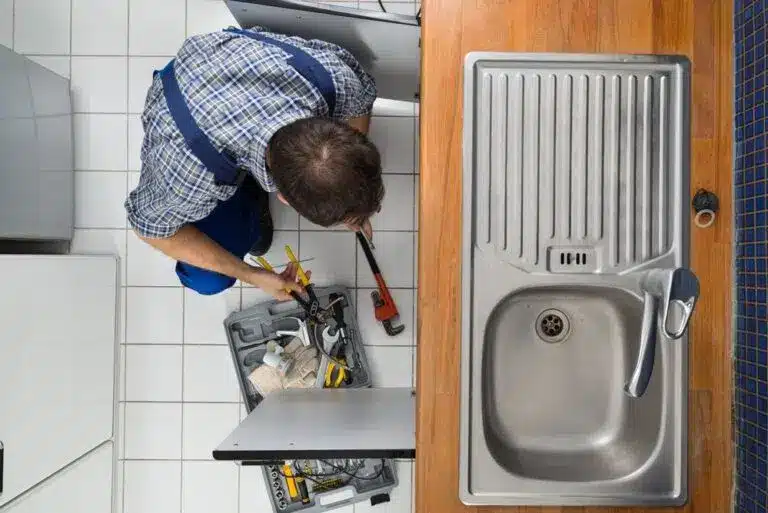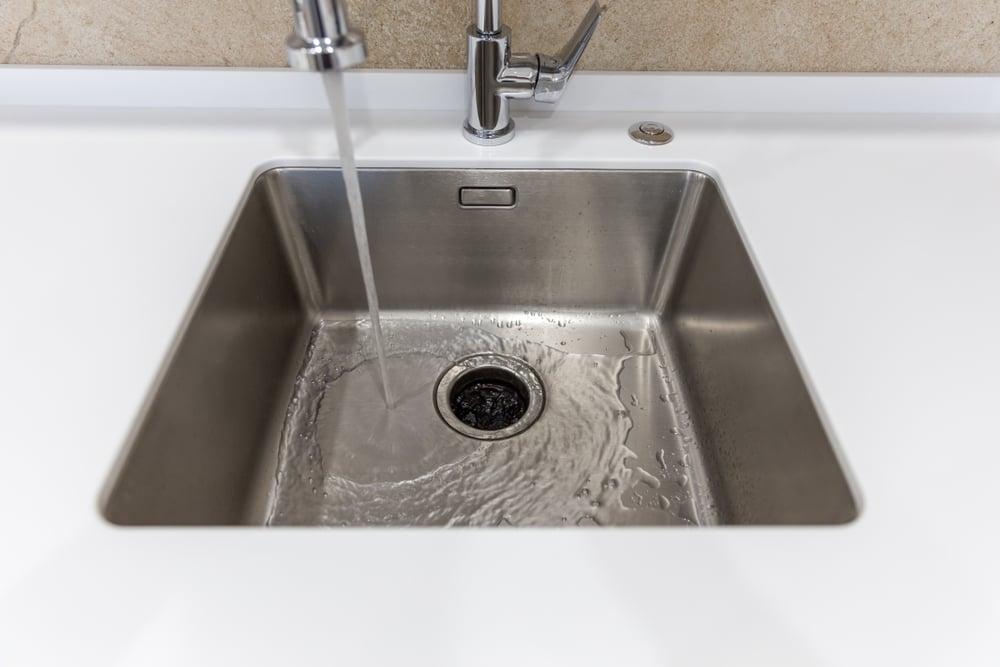An Guide to Resolving a Leak in Your Garbage Disposal
An Guide to Resolving a Leak in Your Garbage Disposal
Blog Article
Just how do you really feel in regards to How to fix a pretty consistent leak from my garbage disposal?

Waste disposal unit are crucial cooking area home appliances that assist in throwing away food waste successfully. Nonetheless, a leaking waste disposal unit can be an aggravating and untidy problem to manage. The good news is, several leaks can be repaired easily with a few basic steps. In this short article, we will certainly review exactly how to repair a leaking waste disposal unit properly.
Intro
Garbage disposals are set up under kitchen sinks and are created to shred food waste right into smaller items, permitting it to go through the plumbing system conveniently. While these tools are typically reputable, leakages can happen over time due to wear and tear, loosened links, or damages to the device.
Step-by-Step Guide to Dealing With a Dripping Garbage Disposal
Turn Off the Power
Prior to trying any repair work, make sure that the power to the garbage disposal system is shut off to stop the danger of electric shock.
Locate the Leakage
Recognize the exact place of the leakage and figure out the cause
Tighten up Connections
Make use of a wrench to tighten up any kind of loose links in between the disposal device and the pipes system.
Replace Seals or Gaskets
If the leakage is due to used seals or gaskets, eliminate the old parts and replace them with new ones.
Patching Cracks or Holes
For fractures or holes in the disposal device, use epoxy or a suitable patching material to secure the damaged area.
Identifying the Resource of the Leakage
Before attempting to deal with a leaking waste disposal unit, it is vital to determine the source of the leak. This can usually be done through aesthetic examination or by performing straightforward tests.
Visual Inspection
Check the garbage disposal system carefully for any kind of indicators of water leak. Pay close attention to locations around seals, gaskets, and connection points.
Evaluating for Leaks
One method to examine for leaks is by running water with the disposal system and checking for any kind of visible signs of leakage.
Typical Root Causes Of Leakages in Garbage Disposals
Worn Seals and Gaskets
Seals and gaskets play a vital duty in protecting against water from dripping out of the waste disposal unit. Gradually, these parts can wear away, resulting in leaks around the disposal system.
Loose Links
The links in between the garbage disposal and the pipes system can come to be loosened with time, triggering water to leakage out during procedure.
Fractures or Holes in the Disposal System
Physical damage to the garbage disposal, such as cracks or holes in the housing, can additionally lead to leakages.
Devices and Materials Needed for Fixing a Dripping Waste Disposal Unit
Before beginning the fixing process, collect the required tools and materials, consisting of a screwdriver, adjustable wrench, plumber's putty, replacement seals or gaskets, and epoxy or patching product for repairing fractures or openings.
Testing the Garbage Disposal After Repair Work
Once the repair service is complete, evaluate the waste disposal unit by running water via it to make sure that the leak has been resolved.
Preventive Maintenance Tips to Prevent Future Leaks
To prevent future leakages, it is essential to perform normal upkeep on your waste disposal unit. This includes keeping it tidy, avoiding placing non-food things or hard things down the disposal, and regularly checking for leakages or various other issues.
Conclusion
In conclusion, fixing a dripping garbage disposal is a fairly straightforward process that can be completed with fundamental tools and products. By following the actions described in this write-up and exercising preventative upkeep, you can maintain your garbage disposal in good working condition and avoid pricey repair services in the future.
HERE’S HOW TO FIX YOUR GARBAGE DISPOSAL
WHAT TO DO IF SOMETHING IS STUCK IN YOUR GARBAGE DISPOSAL
If the impeller won’t turn, there’s probably something stuck in the disposal. It could be a steak bone or peach pit, although plumbers report pulling all sorts of inappropriate objects out of disposals, such as bottle caps or aluminum foil. Make sure power to the disposal is off, and look inside to see if you can see the source of the jam.
Never stick your fingers in a disposal. Pull out anything you see with tongs or pliers.
If the disposal still won’t work, it may be time to call a plumber or consider buying a new disposal. GEM Plumbing & Heating is here for all of your garbage disposal needs.
WHAT TO DO IF YOUR GARBAGE DISPOSAL DRAIN IS CLOGGED
Take everything out from underneath your sink and put a bucket or other container under your disposal to catch any water that drains out. Disconnect your disposal from the power supply. If it’s plugged into a wall outlet, unplug it. If it’s hardwired into an electrical box, go to the electrical panel and turn off the breaker for the disposal. Pour ¼ cup of baking soda into the drain, followed by ½ cup of white vinegar. Give the solution a few minutes to fizz and do its work. Look into the disposal with a flashlight to see if you can see an object that might be causing the clog. If you see it, remove it using tongs or pliers. MORE TIPS ON DEALING WITH A CLOGGED GARBAGE DISPOSAL
Never use drain cleaner in a garbage disposal. It can damage the plastic parts inside the disposal. You can also be splashed with the caustic liquid while working to clear the clog. Beware! Never stick your fingers into a garbage disposal. Trust us — not a good idea. In many instances, your dishwasher drains through your garbage disposal. This allows the disposal to grind any large food particles that may be drained out of your dishwasher. There are some jurisdictions, however, where the plumbing code prohibits such a connection. WHAT TO DO WHEN YOUR DISHWASHER DRAINS THROUGH THE DISPOSAL
Run some water in the sink so your plunger has at least a ½-inch of water to create a seal and plunge vigorously up and down several times. You may need to repeat this several times. Run hot water down the drain to clear any residue that remains.

I hope you enjoyed our article about Why Is . Thanks a lot for spending some time to read through our article. Are you aware of another individual who is fascinated with the niche? Please feel free to share it. Thanks a lot for taking the time to read it.
Contact Report this page